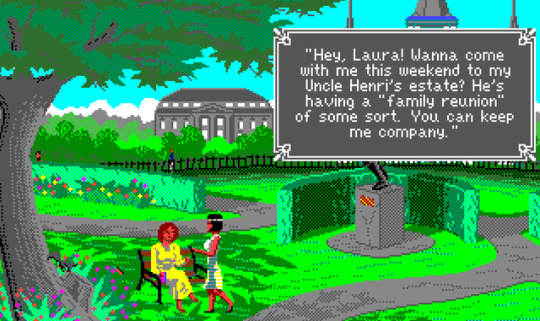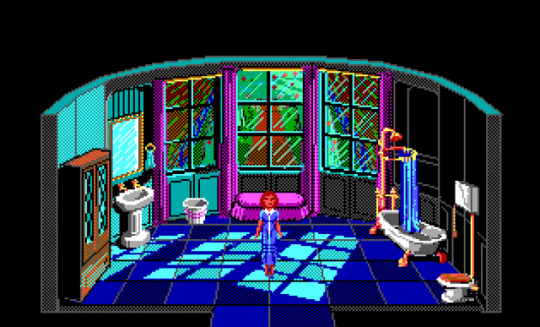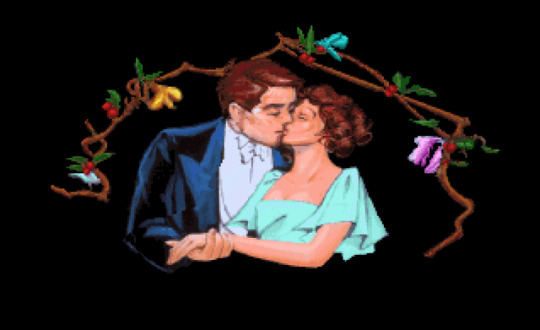#i personally am awaiting my spirit tracks remake :)
Note
Idk if anyone has asked this yet but do you think we could get a third game in this Hyrule. Like do you think they have left enough for another one story wise?
I think they do. Their biggest hurdle is going to be making Hyrule fresh and exciting the way the Upheaval did, and they can't pull the same thing twice—we've got verticality and new caves, what can they add?
They could make settlements in the Depths that are fun, and have the timeskip be later so that more towns are able to pop up. Maybe a new Skyloft from people who wanted to take the sky isles and their out-of-reach-of-monster-ness.
In terms of conflict, though, we've got plenty of beats they could reuse. I think the best potential they have, though, is a Four Swords multiplayer-style game.
Vaati hasn't been used for awhile, and the Triforce in the Wild era is still missing in action. There's also a Spirit Realm aspect that could be used to try to find the Triforce. But more importantly, Link drawing the Four Sword would mean that people could play together and do all kinds of whacky things to each other with the physics engine; imagine if you could ultrahand stuff around your friend, and how much chaos that could make.
On the singleplayer front, Nintendo's already testing out a follower system with 4+ companions. The AI for the Sages in TotK isn't great, but it's intuitive enough that they teleport after you if you ever lose them and get out of your way when you're lining up a shot or a camera, which is more than I can say for Skyrim. If they continue improving on that, I think a 4 Swords sequel is a fantastic way to show it off.
I do hope that it's on something more powerful than the Switch, and with better connectivity than Nintendo Online, though. I personally wouldn't have problems in my gameplay if it wasn't, since my roommate can sit right next to me, but a bunch of streamers I watch would ABSOLUTELY want to play together and Nintendo Online sucks.
If they decide to make the Wild Era a trilogy, I hope multiplayer is what they go with.
#loz#zelda#ask bee#long post#totk#totk spoilers#bring. back. vaati#and the minish#yes yes copyright whatever you think nintendo can't pay capcom enough money? they can and will if they think it'll net them MORE#also a 4-swords sequel would at least give an answer as to why nintendo absolutely obliterated poor pointcrow#it wouldn't make it right but it would give it an answer#i personally am awaiting my spirit tracks remake :)
32 notes
·
View notes
Photo










The deductive point ‘n click escapades of a forgotten southern belle
Adventure games of the point ‘n click variety are a genre that tend to feature female protagonists more often than others. Why this is the case, I’m not entirely sure - it might have something to do with the stereotype that women are more patient, more willing to read and perhaps better at solving puzzles than men. Or, perhaps legendary adventure game designer Roberta Williams’ influence still holds strong, at least on a subconscious level in the minds of designers, over the genre that she helped nourish in the 80s and 90s, and the heroines of today’s games are merely following in the footsteps of fine women that preceded them, like Rosella of Daventry in King’s Quest IV.
Whatever the reason, despite there being quite a few point ‘n clickers popping up these days with engaging female protagonists (Kathy Rain is one that I played early this year and enjoyed), there’s a 1920s southern belle who probably deserved a long-lasting series but only got two games which are somewhat overlooked these days. Her name is Laura Bow, and she served as the protagonist of two Sierra titles that were released in 1989 and 1992 - The Colonel’s Bequest and The Dagger of Amon Ra.
Laura seems to have been specifically patterned after famous silent film actress Clara Bow, but at her heart she’s more like a slightly older version of Nancy Drew, and her two games embody Nancy’s fine tradition of mystery solving. The Colonel’s Bequest takes place on a private island in the bayous of New Orleans as Laura accompanies a friend and fellow Tulane University student for a weekend getaway at the manor of her uncle, Colonel Dijon. The old man is bequeathing his fortune to relatives and has invited a motley assortment of characters right out of an Agatha Christie paperback - the drunk aunt, the conceited Hollywood starlet, the perverted doctor who seems to have a thing for betting on the ponies - and a la Clue, bodies start piling up as the relatives presumably begin offing themselves in order to get Dijon’s fortune first.
I mentioned Roberta Williams previously, and The Colonel’s Bequest was actually designed by her as one of those rare side projects that didn’t feature the words “King’s” and “Quest” in the title. (Hm, I suppose it’s called The Colonel’s Bequest, so scratch that.) It’s always hard to tell how much Roberta was involved in non-King’s Quest projects - The Dagger of Amon Ra, for instance, was directed by Bruce Balfour despite featuring her name on the box - but I’d wager that she intended The Colonel’s Bequest to be a spiritual remake of her very first adventure game (and indeed, the first graphical adventure game ever), Mystery House. Mystery House featured a similar murder plot, and The Colonel’s Bequest takes this concept and evolves it, offering a unique structure where there aren’t really any puzzles to solve but instead “scenes” to witness. The entire game is structured like a play - there’s even a cast curtain call in the beginning - and Laura is encouraged to spend as much time as possible talking with the potential murder suspects and finding unique ways to eavesdrop on them.
The game’s manual makes a huge deal about this emphasis on observing the story and slowly figuring out the links between characters in an effort to deduce the killer, and we can look at Johnny L. Wilson’s 1990 review of the game in Computer Gaming World as an example of how this approach was seen as admirable, fresh and also a bit risky at the time. Don’t let the fact that there aren’t many puzzles fool you into thinking that The Colonel’s Bequest is easy, though - it’s just as tough as Sierra’s other adventures with just as many nonsensical ways to die, and the unique structure where certain events and conversations are “timed” (indicated on screen by a clock) means that sometimes you’ll be wandering around aimlessly searching for the next thing to do, or possibly miss out on vital bits of info because you weren’t at the right place at the right time. It’s a little like The Last Express, only less refined.
Luckily, the game’s great atmosphere makes up for any shortcomings that its boldly unorthodox but occasionally clunky design creates. This is one of the best 16 color titles that Sierra produced with their SC10 engine, and the soundtrack is packed with jazzy songs influenced by the Roaring Twenties with just enough sense to know when to be quiet as well. As you navigate Laura across the silent grounds of the mansion in the dead of night, wondering where the killer might be, it’s very possible to get shaken by the sound of lightning bursting in the background, and I can certainly imagine young players in 1989 jumping out of their skin when they encountered such moments.
Laura’s next outing, The Dagger of Amon Ra, trades the dark island setting for the Egyptology craze of the 20s, and loses a little bit in the process but makes up for it with 256 colors, rotoscoped animations (which are darn smooth but cause character sprites to be a bit muddy, unfortunately) and an even catchier selection of jazz tunes, including an amusing vocal track called “The Archaeologist Song.” Oh, and the CD version is a “talkie” game, with performances that range from kinda terrible (Sierra was still having their employees voice these games at the time instead of hiring actors) to excellent (Laura’s got a cute southern accent and the narrator’s voice is heavenly).
The plot revolves around the titular Dagger of Amon Ra, an Egyptian artifact that’s been stolen from a New York City museum. Laura, now a fresh grad from Tulane and in the middle of her first journalism assignment at an NYC paper, has to navigate the mean streets of Manhattan, infiltrate a speakeasy and chat with a mildly racist caricature of a Chinese laundromat owner before getting into the museum, where she once again encounters a wide cast of characters, from the stuck up British twat who removed the dagger from Egypt to the nutty countess, who is possibly engaged in some mild robbery efforts around the museum when nobody’s looking. People start dying pretty soon (and their death scenes are grand - check out this poor SOB who got decapitated and stuck with a Perodactyl beak) and while the beginning section of the game outside of the museum is more like a traditional point ‘n click affair, once you’re locked inside the building after the first murder, everything becomes reminiscent of The Colonel’s Bequest. You’ve got to meander about, hope you bumble upon the right conversations and try your best to piece together clues before the murderer suddenly starts chasing you during the game’s second-to-last chapter.
The Dagger of Amon Ra kind of stumbles in its execution of this form of gameplay more than its predecessor, because all the chapters of museum exploration feel terribly disjointed even more than walking around Colonel Dijon’s mansion did. Also, the character motivations are unclear, which is a problem in a mystery game - especially one where the entire final chapter actually involves Laura being quizzed by the coroner in an annoying game of 20 Questions as to the identity and motives of the killer! If you slip up once during this finale, you’ll get the bad ending, which involves the killer finding Laura’s apartment and GUNNING HER IN HER SLEEP, jinkies. And even if you succeed and get the good ending, which sees Laura writing her first award-winning expose on the theft and hooking up with putzy love interest Steve Dorian, it’s still quite impossible to discern the killer’s motives and why he went about his nefarious deeds, because The Dagger of Amon Ra just...doesn’t explain things. I’m not the only one who had trouble figuring it out - The Adventure Gamer blog wrote up a fantastic series of posts about this game and came to the same confused reaction as I did.
Both Laura Bow adventures come from an older time where it was common to take notes as you went through a game, so perhaps my puzzlement at The Dagger of Amon Ra’s ending is due to my lack of pencil and paper by my side as I played. I did use walkthroughs for both games, though, and if you do end up checking them out (they’re available on GOG), I’d recommend doing the same. You probably still won’t be able to figure out why whatshisname stole that dagger, but despite their flaws, the Laura Bow games really are worth experiencing. Laura’s a likeable lead (just look at this adorable expression on her face as she stumbles upon the museum’s French skank engaged in hanky panky with the janitor) and she does a fine job of showing off the spirit of the 20s, an underrepresented period in the pantheon of electronic gaming.
Laura never got a third game, and as far as mystery franchises go, Sierra soon passed the torch to the Gabriel Knight series, which apparently takes place in the same universe, since Gabriel visits Tulane in Sins of the Fathers and hears word of a lecture being given by “Laura Bow Dorian” - a hint that Laura married Steve Dorian and lived happily ever after! I’m glad that Ms. Bow got a nice ending even if we couldn’t see it in game form, and I’m sure that if she were a real person, she would be pleased to see spiritual successors of sorts like the aforementioned Kathy Rain following in her footsteps today.
This is perhaps a good place to mention The Crimson Diamond, an upcoming indie game in the works by Canadian illustrator Julia Minamata. I recently played through the demo and am eagerly awaiting the full release - it’s almost like a direct sequel of The Colonel’s Bequest with an alternate universe version of Laura. Rest assured, Ms. Bow - even if your adventures aren’t as remembered these days as they should be, the example you set of the enterprising female gumshoe is alive, well and in good hands!
All box art and screenshots from Mobygames.
#pixel grotto#video games#favorites#laura bow#colonels bequest#dagger of amon ra#sierra online#roberta williams
6 notes
·
View notes